ISSUE 23 | OCT. 2021
|
|
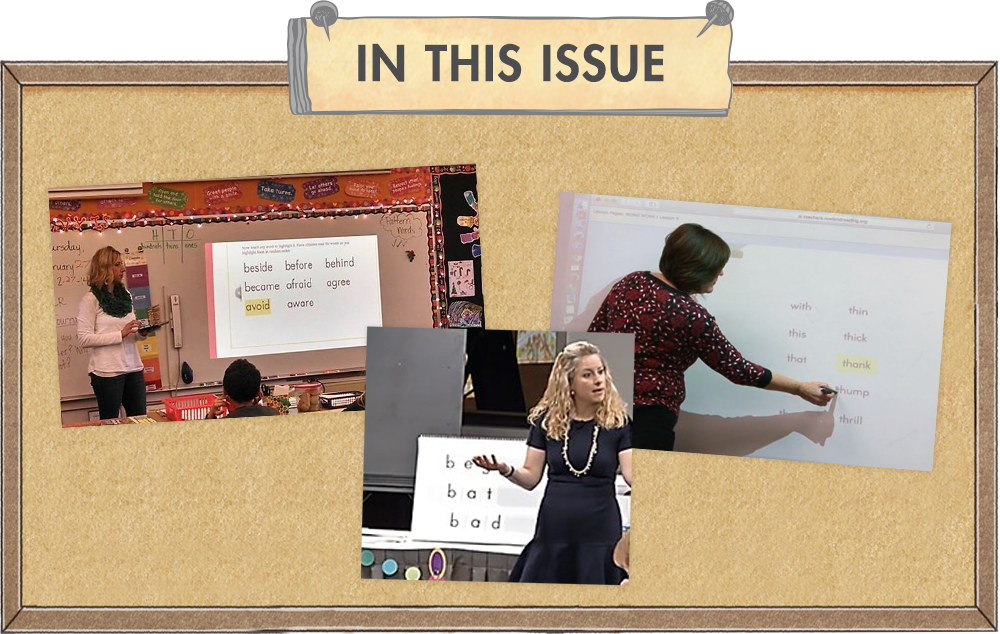
|
|
|
|
|
|
The Superkids Reading Program places a great deal of emphasis on teaching the blending process and daily blending and decoding practice. It’s not enough for children to just know letters and sounds. In order to become fluent and accurate decoders, children must be able to mentally push those sounds together to form words.
|
|
|
|
Daily repeated practice is vital for the development of automatic decoding and fluent reading. And, practice needs to be with words in isolation and in context. In this issue, we focus on blending and decoding practice at the word level, provide tips for using the Big Book of Blending and the Big Book of Decoding, and feature a puzzling freebie that you can use right away!
|
|
|

|
|
|
|
|
|
In kindergarten, blending is introduced in Unit 5. Throughout the program, children are expected to decode only words with letter-sounds they’ve been explicitly taught. Children practice blending sounds to read words on Student Book pages. They also build skills by substituting letters in words and blending the sounds in the new words during Daily Routines. By the end of kindergarten, children should achieve automaticity in blending single letter-sound correspondences and be able to decode hundreds of phonetically regular words.
|
|
|
In first grade, children will develop more automaticity with decoding words and can focus more attention on comprehending text. They become real readers. Reaching this goal requires lots of decoding practice. Daily practice in decoding helps children develop automaticity in decoding words containing the phonetic elements they are currently learning, as well as those they’ve learned previously. In first grade, children learn about the variability of letter-sound associations—that two or more letters together can stand for one sound and that the same sound can be spelled different ways. They also learn to use word structure and patterns to decode words.
|
|
|
In second grade, children are expected to understand how they can use fluency skills to help them achieve the goal of fluent reading. Essential phonics skills that were taught in first grade are reviewed during core instruction. The goal by the end of second grade is for children to be automatic decoders who can read grade-level text fluently. Daily decoding practice helps children develop automaticity when reading phonetically regular words.
|
|
|
In each level of Superkids, whole-class blending and decoding practice with words in isolation are essential. The Daily Routines and Word Work activities provide this important daily practice. When children have not mastered the blending and decoding process, additional opportunities to practice one-on-one or in small groups are recommended.
|
|
|
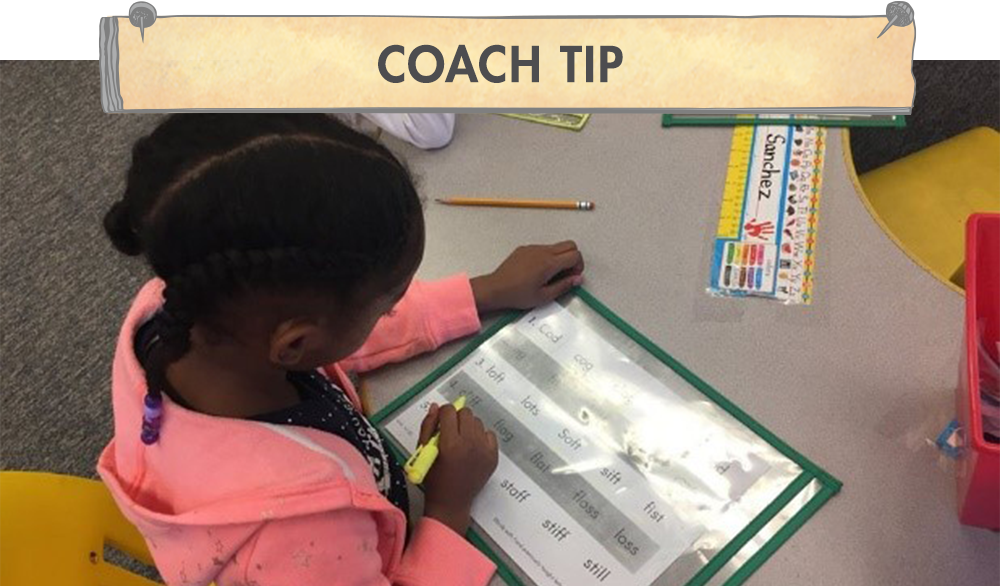
|
|
|
|
|
|
When your class reaches Unit 6 (Sal), begin adding 10 minutes of blending practice each day using the Big Book of Blending. Superkids teachers have shared that their kindergartners who have received 10 minutes of blending practice a day, in addition to the core instruction, achieve significantly greater gains in reading ability compared with past kindergarten classes that did not receive this daily blending practice.
|
|
|
Teachers also share that this practice is not always completed during the reading block. Some teachers choose to add the 10 minutes to the morning meeting, while others practice before read-aloud time. We have even seen teachers provide five minutes of practice with the whole group, and then begin their small-group activity with five minutes of blending practice in a more focused setting. Do what works for you and your schedule! Providing this 10 minutes of blending practice will be super beneficial to your kindergartners.
|
|

|
|
|
|
|
|
The Big Book of Blending in kindergarten or the Big Book of Decoding in grades 1 and 2 is the ideal Superkids resource for providing practice with blending and decoding at the word level. We have collected a few tips for using the Big Books.
|
|
|
Here are a few tips to encourage students to do their best work when completing tasks independently:
- If a child at any grade level can’t blend letter-sounds well, hesitates to sound out words, or guesses a new word based on the first letter, they might have weak skills. Reviewing and reteaching this blending procedure is a good place to start.
- Point to the letter combination or word you’d like children to blend.
- Point to the letter for the first sound.
- Say the first sound with children and slide your finger or pointer immediately to the second letter.
- Say the second sound. If the word has three or more letters, stretch out the vowel sound as you slide your finger under and say the sound(s) of the last letter(s). Be sure to use short vowel sounds for all items.
- Have children sound out the word by themselves as you point again to the letters.
- Say the word quickly and smoothly. Have children repeat after you.
Watch this video to see the blending procedure in action.
- Use the page in the Big Book that corresponds to your current unit. Point to one word at a time and have children read the word aloud together. If the words are listed in columns, have children discuss the pattern within a column before reading the words aloud going down the column. If the words are in rows, move from one word to the next in each of the rows. Repeat so children read aloud the designated rows or columns several times. For additional practice, point to words randomly in the rows or columns and have children read them aloud again. If children have trouble decoding a word, help them determine the vowel sound in the word using the sound-spelling patterns and reading rules they’ve learned. Then have them blend the letter-sounds together with you as you slide your finger or pointer under each letter in the word. Say the word again quickly and smoothly, and have children repeat after you.
- Be sure to discuss the meaning of words you think students might not know and use these words in context sentences.
|
|

|
|
|
|
|
|
Looking for some different ways to use the Big Book? Here are a few extension activity ideas that provide lots of practice with decoding—and are also fun!
|
|
|
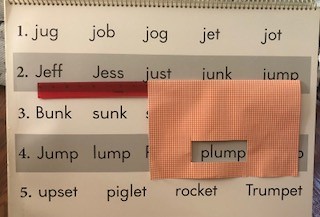
|
|
Word Finder
Make a word finder by cutting a rectangular hole out of a piece of thick paper. The opening should be large enough to show the longest word on a Big Book page when placed over the word. Use the finder to choose an item for children to read. Build suspense by slowly moving the finder over letter combinations and words. Stop suddenly on an item and call on a child to read it. Children can also take turns using the finder and calling on others to blend.
|
|
|

|
|
Rhyming Words
Point to and read a word on a Big Book page. Have children identify other words on the same page that rhyme with the word you read. Then challenge them to name additional words that also rhyme with the word. Work with children to come up with phrases or sentences that use two or more of these rhyming words.
|
|
|

|
|
Completing the Sentence
Choose a few words from a Big Book page to use in sentences. On handwriting paper, write a decodable context sentence for each word, but show a blank line in place of the Big Book word. Photocopy the sentences and distribute them to children. Tell them to find the word on the Big Book page that best completes each sentence and write it on the line.
|
|
|
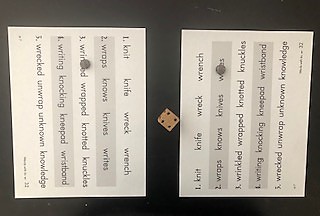
|
|
Playing Word Race
Give printouts of two different Big Book pages to pairs of children. Each child uses one of the pages as a game board and a button or scrap of colored paper as a marker. To play, partners take turns rolling a number cube, reading aloud as many words as the number they rolled, and moving their marker to the last word they read. The first player to get to the last word on their game board wins the game.
|
|
|
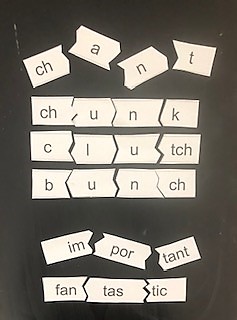
|
|
Blending Puzzles
Select current unit words from the Big Book of Blending or the Big Book of Decoding. Print the selected words on paper strips and cut words into puzzle pieces, one piece for each letter-sound. Ask children to put the pieces together to form a word, say the letter-sound for each puzzle piece, and then blend these letter-sounds quickly and smoothly aloud.
In first and second grades, if children’s letter-by-letter blending is good, you can provide practice blending chunks within words by cutting up longer words into logical word parts. Have children say the word part for each piece, put the puzzle pieces together, and blend the parts quickly to read the whole word.
|
|
|
|
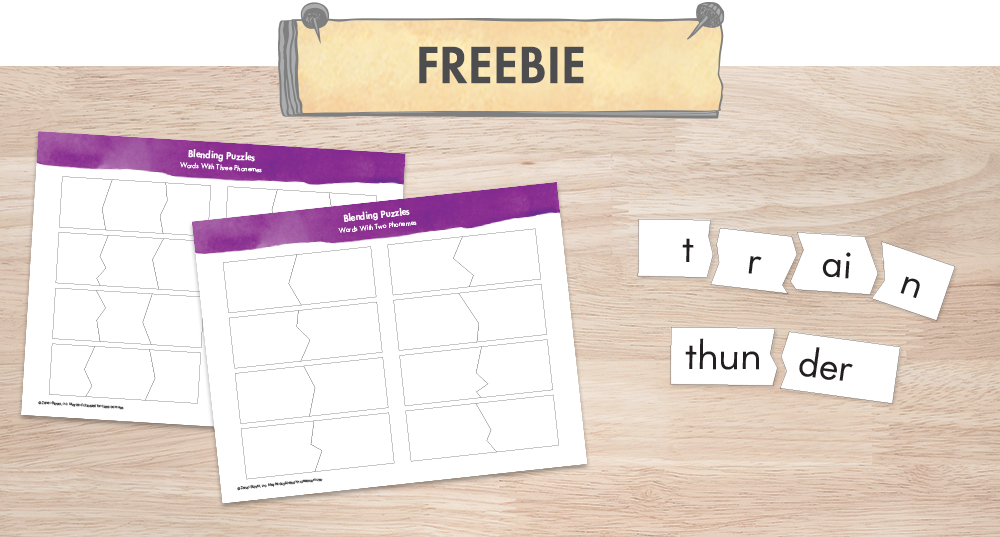
|
|
|
|
|
|
Did you want to try the Blending Puzzles activity we shared above? We have you covered! Use this fillable PDF to create oodles of blending and decoding fun!
|
|
|
|
|